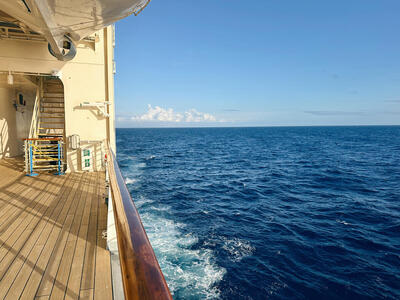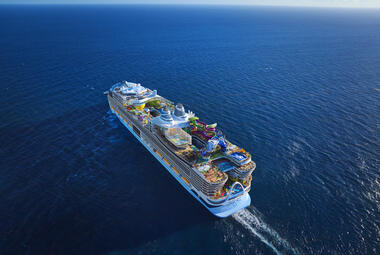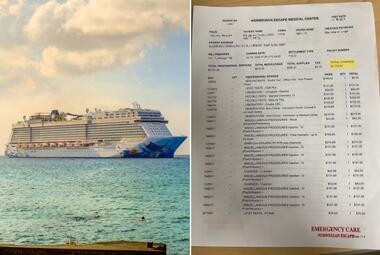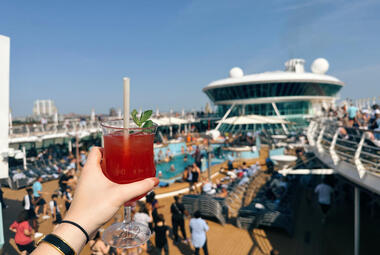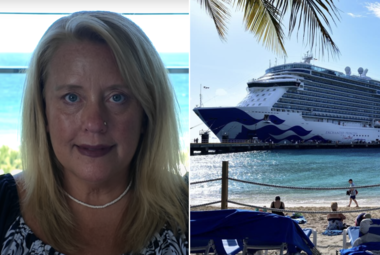Did you know that modern cruise ships can travel around 575 miles per day?
As humans, we travel nearly every day, whether commuting to and from work, going to the supermarket, or boarding a plane to visit relatives in another state. In other words, the speed of various modes of transportation is something that's thought about almost daily.
Some cruise ships don't have to travel as far, such as a Bahamas cruise from Fort Lauderdale to Nassau. Others, however, cross large bodies of water like the Atlantic Ocean. To do so in a timely manner, most modern cruise ships can travel upwards of 400 or 500 nautical miles per day.
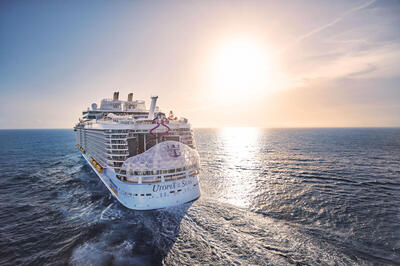
Of course, this actual number varies based on the specific ship and weather conditions, which can substantially slow a ship down.
How is the speed of cruise ships calculated and what's a nautical mile? We break down those common questions below.
Read more: How fast do cruise ships go?
The speed of cruise ships is measured in knots, whereas distance is measured in nautical miles
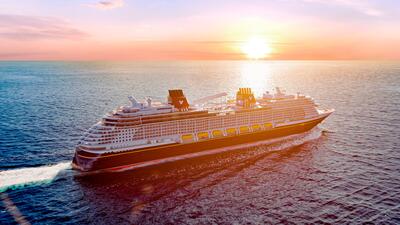
While you might be used to measuring speed in miles per hour (mph), the speed of ships is measured in knots, with one knot equaling one nautical mile or 1.15 land miles.
Let's assume that during a sea day from Fort Lauderdale to St. Maarten, your ship travels at an average of 19 knots. This would mean that you're sailing roughly 21.85 land miles per hour. After 24 hours, you would have traveled close to 456 nautical miles, or 524 land miles.
To put that distance into perspective, Jacksonville and Miami, Floridam are roughly 350 miles apart, meaning it is not uncommon for cruise ships to travel the entire length of Florida's East Coast in a single day!
Remember: knots measure speed while nautical miles measure distance.
Most cruise ships sail around 18 to 22 knots
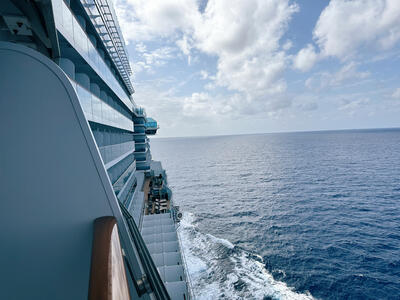
The speed of a cruise ship can vary, even throughout a single day! Usually, however, your ship will often sail around 18 to 22 knots, or 20 to 25 land miles per hour.
The distance you have to travel is one factor determining how fast your ship will go. If, for instance, you're cruising from Miami to The Bahamas, you will not sail as quickly as a ship that's embarking on a 7-night itinerary to the Eastern Caribbean from Port Canaveral.
While the average speed for most modern cruise ships is between 18 to 22 knots, the maximum speed is anywhere from 25 to 30 knots. Currently, Cunard's Queen Mary 2 has the fastest speed for a modern-day ocean liner with a maximum speed of 30 knots.
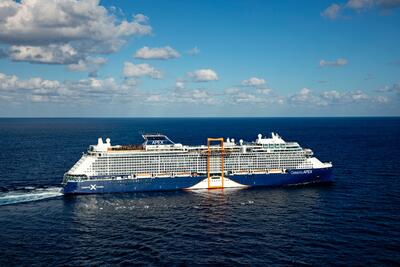
It's unlikely that your ship will reach its maximum speed while you are onboard, as it is rare that the ship's Captain determines is necessary to sail at such a rate other than during sea days, which is when the ship's crew pushes the ship to its limits to ensure that it meets performance specifications.
Ocean liners travel faster than cruise ships

As mentioned above, Cunard's Queen Mary 2 is a current record-holder when it comes to the fastest ocean vessel. However, did you know that the ship isn't technically a cruise ship?
Queen Mary 2 travels from New York to Southampton, England on weekly transatlantic voyages that are designed more as a means of transportation and comfort, rather than a vacation. Crossing the Atlantic in just seven nights means that she had to be built for speed, whereas cruise ships are more commonly designed as a destination in and of themselves.
Let's take Royal Caribbean's Harmony of the Seas as an example. Harmony of the Seas is currently the fifth-largest cruise ship in the world and offers seemingly endless activities and dining options onboard. From the zip line to the mini-golf course, FlowRider surf simulator, ice skating rink, Broadway-style shows, and more, you may not even want to venture off the ship when it's docked in port!
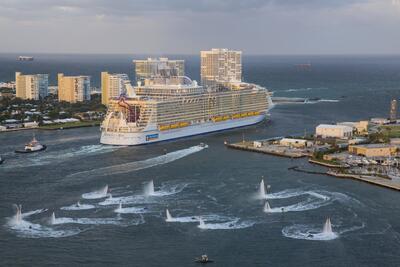
During sea trials, Royal Caribbean's former CEO Richard Fain said that, while Harmony could reach speeds of up to 25 knots, the objective is to keep the ship around 18 or 19 knots. Either way, the ship still cannot travel as fast as Queen Mary 2!
New cruise ships are being redesigned to improve the overall performance of their engines and hull design
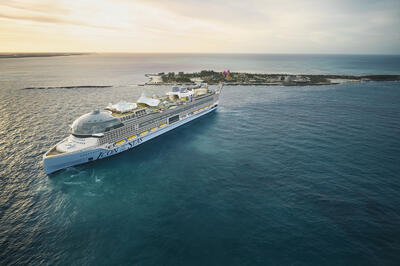
Today, the majority of new cruise ship builds are running on more efficient engines to help them reduce their carbon footprint. LNG-powered fuel, for instance, helps to reduce carbon emissions by roughly 30%.
This, however, does not have any real impact on the speed, as cruise lines would rather design ships to be more environmentally friendly than increase the maximum speed. In other words, LNG-powered fuel and other flex-fuel engines allow cruise ships to travel at the same speed while consuming less fuel.
If the ship travels too fast, you might fall victim to the effects of motion sickness, which isn't a fun way to spend your vacation!
The distance a cruise ship can travel in a single day varies based on the size of the ship, as well as the route and weather conditions
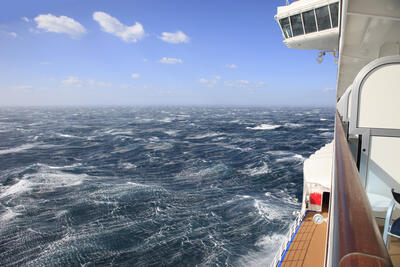
If you awaken to find that you're sailing through some choppy waters, the ship's Captain will likely have decreased the ship's speed. Moreover, if a strong storm system approaches, it may cause the ship's team to take a different route to avoid rough conditions.
Due to the unpredictability of the weather, you should not book a return flight too early on disembarkation day. If your ship is caught in less-than-ideal weather, you might find yourself in a situation where you are scrambling to rebook your flight because you are delaying returning to port.
For example, a number of ships were delayed returning to Florida after a freak winter storm, including Carnival Celebration. Rather than docking first thing in the morning, there were guests still trying to get off around 4:40pm. Usually, this is when all guests for the new sailing are required to be onboard!
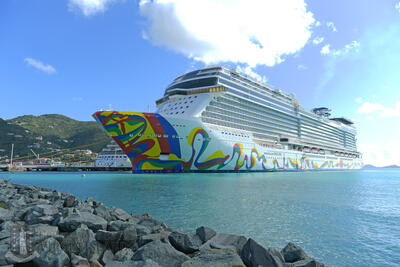
In general, however, one common reason that you may find ships slowing down is to adhere to their scheduled arrival time in port, as each hour that a ship is docked costs the cruise line money in docking fees.


